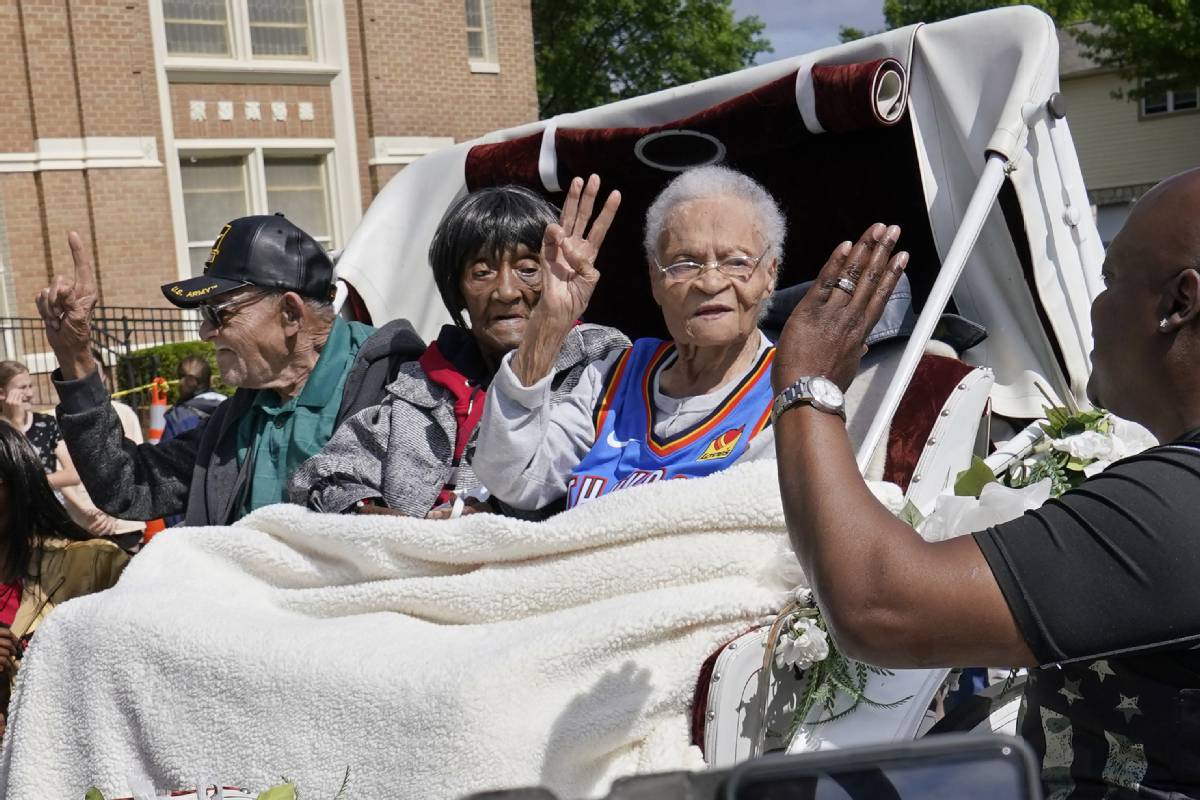A century later, city still struggles with slaughter


With Tulsa the self-proclaimed "Oil Capital" still on its upward trajectory, the city government was only too eager to bury what it saw as its biggest PR problem. Meanwhile, the victims themselves were too traumatized and too afraid to talk about it. In fact, with their entire community in charred ruins, many left Tulsa and never returned.
But some did choose to stay. Left to pick through the rubble amid smoldering debris, those black Tulsans embarked on an arduous rebuilding, one that was often impeded by the city government.
"The city passed an ordinance that you had to rebuild with nonflammable materials, which my grandfather thought was unfair and unreasonable," said John Whittington Franklin, whose grandfather, Buck Colbert Franklin, was a Tulsa-based attorney in the first half of the 20th century. "He fought it successfully all the way to the state Supreme Court."
The rebuilding resumed, with black Tulsans encouraged by the lawyer to use whatever they could find, from old bricks to pieces of wood. For four years, the man lived in tents, away from his wife and children, including son John Hope Franklin (1915-2009), father of John W. Franklin and renowned African American historian.
"My grandfather moved 60 miles from the small town of Rentiesville to Tulsa and opened his law firm in February 1921. My grandmother had planned to join him at the end of May, but the massacre changed everything," John W. Franklin told China Daily in early June. "The family wasn't reunited in 1925."
In 2015, eight years after John Hope Franklin and his son edited and published the late lawyer's autobiography My Life and An Era, John W. Franklin was presented with his grandfather's manuscript, discovered in a rented storage area.
"I wept, I just wept," said the grandson, who first visited his grandfather in Tulsa in 1954, at the age of 2.
Within those 10 pages, the lawyer told one of the greatest tragedies of his era, through the story of one man with whom he had crossed paths several times in life.
It begins in 1918, soon after World War I, when a young African American veteran named Mr. Ross felt angry and betrayed because of his treatment despite his military service. It proceeds to an account of Ross defending his black community in 1921 during the massacre, and ends 10 years later, with the man, who had lost both his eyesight and his mind in the fires that destroyed his home, sitting in a mental asylum staring blankly into space. Somewhere on a street corner in Tulsa sits Mother Ross with her tin cup in hand, begging alms of the passers-by.
The typewriter on which the story had been written, on yellowed legal paper, is now on view in the Smithsonian National Museum of African American History and Culture in Washington DC, a museum for which John Hope Franklin served as the founding chairman of its scholarly advisory committee. The gallery, whose collection John Whittington Franklin helped to build, is dedicated to the memory of the Tulsa Massacre.
In an article published on June 3, 1921, two days after the massacre, The Morning Tulsa Daily World, citing Tulsa County deputy sheriff Barney Cleaver, stated that "… the negroes participating in the fight … were former servicemen who had an exaggerated idea of their own importance".
"Exaggerated idea" was the black World War I veterans' expectation for civil rights seen through the distorting prism of racism. Ellis, one of the massacre survivors who spoke at the US Capitol in May, knows all about that expectation and the crushing disappointment that follows.


















